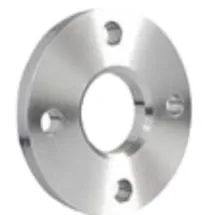-
Cangzhou Yulong Steel Co., Ltd.
-
Phone:
+86 13303177267 -
Email:
admin@ylsteelfittings.com
- English
- Arabic
- Italian
- Spanish
- Portuguese
- German
- kazakh
- Persian
- Greek
- French
- Russian
- Polish
- Thai
- Indonesian
- Vietnamese
- Zulu
- Korean
- Uzbek
- Hindi
- Serbian
- Malay
- Ukrainian
- Gujarati
- Haitian Creole
- hausa
- hawaiian
- Hebrew
- Miao
- Hungarian
- Icelandic
- igbo
- irish
- Japanese
- Javanese
- Kannada
- Khmer
- Rwandese
- Afrikaans
- Albanian
- Amharic
- Armenian
- Azerbaijani
- Basque
- Belarusian
- Bengali
- Bosnian
- Bulgarian
- Catalan
- Cebuano
- China
- China (Taiwan)
- Corsican
- Croatian
- Czech
- Danish
- Esperanto
- Estonian
- Finnish
- Frisian
- Galician
- Georgian
- Kurdish
- Kyrgyz
- Lao
- Latin
- Latvian
- Lithuanian
- Luxembourgish
- Macedonian
- Malgashi
- Malayalam
- Maltese
- Maori
- Marathi
- Mongolian
- Myanmar
- Nepali
- Norwegian
- Norwegian
- Occitan
- Pashto
- Dutch
- Punjabi
- Romanian
- Samoan
- Scottish Gaelic
- Sesotho
- Shona
- Sindhi
- Sinhala
- Slovak
- Slovenian
- Somali
- Sundanese
- Swahili
- Swedish
- Tagalog
- Tajik
- Tamil
- Tatar
- Telugu
- Turkish
- Turkmen
- Urdu
- Uighur
- Welsh
- Bantu
- Yiddish
- Yoruba

Sep . 28, 2024 16:32 Back to list
types of welded pipes
Types of Welded Pipes
Welded pipes are integral to various industries, offering both strength and flexibility in structural and fluid transport applications. They are manufactured through the process of welding together flat plates or strips of metal into a tubular form. This construction method leads to several types of welded pipes, each serving distinct purposes and meeting various engineering standards. Below, we explore the primary types of welded pipes and their applications.
1. ERW (Electric Resistance Welded) Pipes
ERW pipes are one of the most commonly used welded pipes. They are produced by rolling flat steel strips and welding them along the seam using electric resistance. The process involves passing an electric current through the steel to heat the edges and then compressing them together. ERW pipes are widely used in the oil and gas industry, water transportation, and structural applications due to their strength and cost-effectiveness.
2. LSAW (Longitudinally Submerged Arc Welded) Pipes
LSAW pipes are made by bending a flat steel plate into a cylindrical shape and welding it along the seam. This type of pipe is particularly known for its high resistance to pressure and is used in high-stress applications, such as oil and gas transmission pipelines and structural components in buildings. The submerged arc welding method assures minimal defects, resulting in a strong, reliable pipe.
3
. SSAW (Spiral Submerged Arc Welded) Pipestypes of welded pipes

SSAW pipes are manufactured by spirally wound strips of steel, which are then welded using the submerged arc welding process. These pipes are typically larger in diameter and are used in various applications, including wastewater management, water supply, and sometimes in the construction of pipe systems for hydrocarbon transportation. Their spiral structure provides excellent flexibility and strength.
4. TIG Welded Pipes
TIG (Tungsten Inert Gas) welded pipes are often used for applications requiring high precision and strength, such as in the aerospace and food processing industries. The TIG welding process involves a non-consumable tungsten electrode that produces the weld. These pipes offer superior quality and are well-suited for corrosive environments due to their ability to create strong, clean welds with minimal contaminants.
5. FW (Fusion Welded) Pipes
Fusion welding involves melting the base metal pieces together without the addition of filler material. FW pipes are typically produced from high-grade steel, making them highly durable. They are often used in applications requiring high tensile strength and resilience, such as in critical infrastructure and high-pressure systems.
Conclusion
The choice of welded pipe type largely depends on the intended application, pressure requirements, and environmental conditions. Each type has unique manufacturing processes and properties suited to different industries. As technology progresses, the efficiency and quality of welded pipe production continue to improve, ensuring that these essential components meet the ever-evolving demands of modern infrastructures. Understanding these various types of welded pipes is crucial for engineers and buyers alike, as it aids in selecting the right materials for their specific needs.
Latest news
-
ANSI 150P SS304 SO FLANGE
NewsFeb.14,2025
-
ASTM A333GR6 STEEL PIPE
NewsJan.20,2025
-
ANSI B16.5 WELDING NECK FLANGE
NewsJan.15,2026
-
ANSI B16.5 SLIP-ON FLANGE
NewsApr.19,2024
-
SABS 1123 FLANGE
NewsJan.15,2025
-
DIN86044 PLATE FLANGE
NewsApr.19,2024
-
DIN2527 BLIND FLANGE
NewsApr.12,2024
-
JIS B2311 Butt-Welding Fittings LR/SR 45°/90° /180°Seamless/Weld
NewsApr.23,2024











